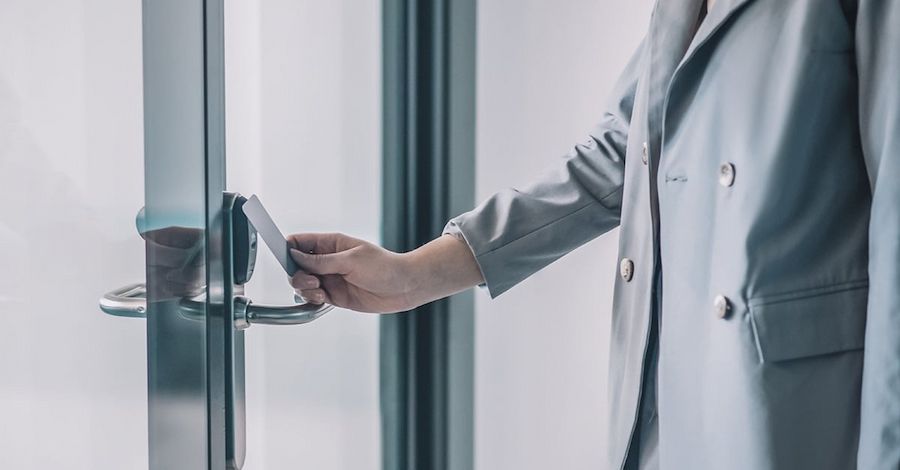In the technological sea, businesses face not only the menace of cyber threats but also the critical necessity of reinforcing their physical security frameworks. This twin challenge necessitates a holistic strategy aimed at protecting resources, sensitive information, and the workforce.
Strengthening physical security within an enterprise demands a thoughtful fusion of cutting-edge technology, established procedural guidelines, and a watchful team to efficiently minimise risks. Through the implementation of resilient measures, organisations can not only ward off potential dangers but also cultivate a safe atmosphere that nurtures productivity and well-being.
Access control Manchester, incorporating state-of-the-art access management systems, plays a pivotal role in this integrated security approach. These systems offer stringent control over entry points, bolstered by surveillance mechanisms and identity verification protocols.
This comprehensive strategy, bolstered by technological innovation and proactive procedures, establishes a fortified shield against threats, ensuring a safe and conducive environment for sustained operational excellence and employee safety. Here are key strategies to enhance physical security within an organisation.
Lock Away Devices:
Laptops remain prime targets for theft, especially when left unattended in easily accessible areas. When employees work across multiple locations, tracking these valuable devices becomes challenging. The significance of these devices goes beyond their monetary value; they often store sensitive information that must not fall into unauthorised hands.
These portable devices are not just costly investments but also repositories of crucial data that demand protection. The potential loss or compromise of confidential information could result in severe consequences for both individuals and the organisation, including data breaches, financial losses, and reputational damage. Therefore, securing laptops is crucial not only for their value but also for safeguarding sensitive data and maintaining the trust of clients and stakeholders.
Limit Access to Sensitive Areas:
Controlling access to sensitive areas within your workplace is crucial for maintaining robust security measures. When there’s no clear understanding of who occupies the premises, determining accountability during incidents becomes challenging.
It’s essential to regulate access to specific zones within your organisation to ensure that only authorised individuals can enter. Even in shared workspaces, having secure areas designated for storing valuables and essential equipment is imperative.
Limiting access to these spaces only to approved employees enhances the protection of assets and reduces the risk of theft or unauthorised handling. Implementing access control measures not only bolsters security but also fosters a sense of trust among employees, knowing their valuable resources are safeguarded.
Securing Telecommunication:
Securing power and telecommunication cabling vital for information systems is paramount to prevent interception, interference, or damage. Employing distinct cable markings minimises errors like accidental disconnection or incorrect patching, safeguarding against data disruptions.
It’s crucial to control physical access to information distribution lines within an organisation’s premises. Taking the effort to label and organise cables meticulously is time well spent, reducing the chances of inadvertent errors that could disrupt critical services.
Neatly labelled and organised cabling ensures not only smooth operations but also facilitates quick troubleshooting and maintenance, enhancing overall system reliability. By instituting these practices, enterprises fortify their infrastructure against potential vulnerabilities and maintain uninterrupted communication and power flow essential for their operations.

Video Surveillance:
Implementing video surveillance within and around your premises serves as a robust security strategy. These cameras act as a deterrent, dissuading potential criminal activities like theft, vandalism, and unauthorised access.
They provide crucial evidence in case of any unlawful incidents occurring on your property, aiding law enforcement investigations. Having comprehensive video surveillance not only discourages wrongdoings but also enhances the safety of your workplace and its occupants.
It serves as a proactive measure, allowing you to monitor activities and respond promptly to any suspicious behaviour. In the event of an incident, having recorded evidence strengthens your defence and helps in resolving disputes or legal matters efficiently, safeguarding your business’s interests and reputation.
Exterior Lights:
Installing exterior lights outside your workplace contributes significantly to employee safety, particularly during departure times. Large parking lots or garages can feel safer with well-lit surroundings, ensuring employees feel secure walking to their cars after work hours. Moreover, these lights serve as an effective deterrent against criminal activities.
Proper illumination acts as a deterrent, dissuading potential criminals from attempting unlawful activities due to increased visibility. Opting for motion-activated lights provides an added layer of security, instantly illuminating areas when triggered by movement, alerting both employees and potentially deterring unauthorised individuals from loitering or attempting to breach the property. This proactive approach not only enhances safety but also fosters a sense of security for everyone within the premises.
Establish Visitor Management Protocols:
Establish strict entry protocols for visitors, including ID verification and issuing badges. Enforce sign-in/out procedures and escort policies for restricted area access. These measures bolster security, ensuring only authorised individuals enter sensitive zones. Structured visitor management enhances accountability and prevents unauthorised access, safeguarding valuable assets and maintaining a secure workspace.
Improving physical security in an organisation requires a multi-layered approach that encompasses technology, personnel training, and procedural guidelines. By implementing these strategies and continuously evaluating security measures, organisations can mitigate risks and create a safer environment for their operations.
Also, read this: What to Do if Your Security Alarm Goes Off?


